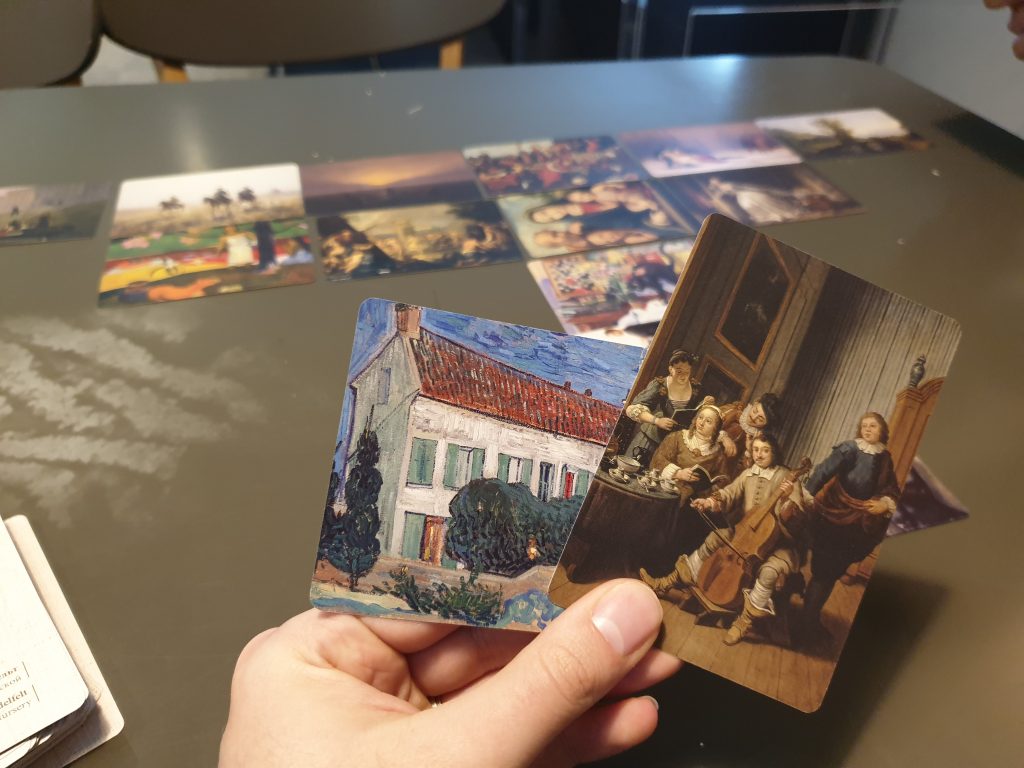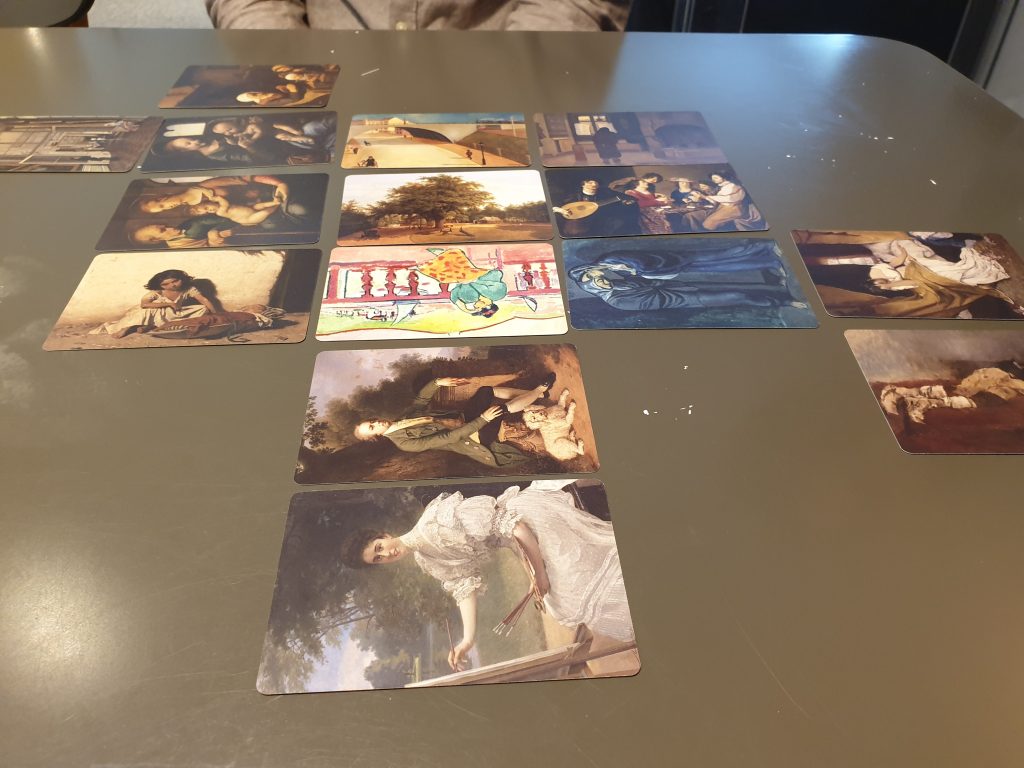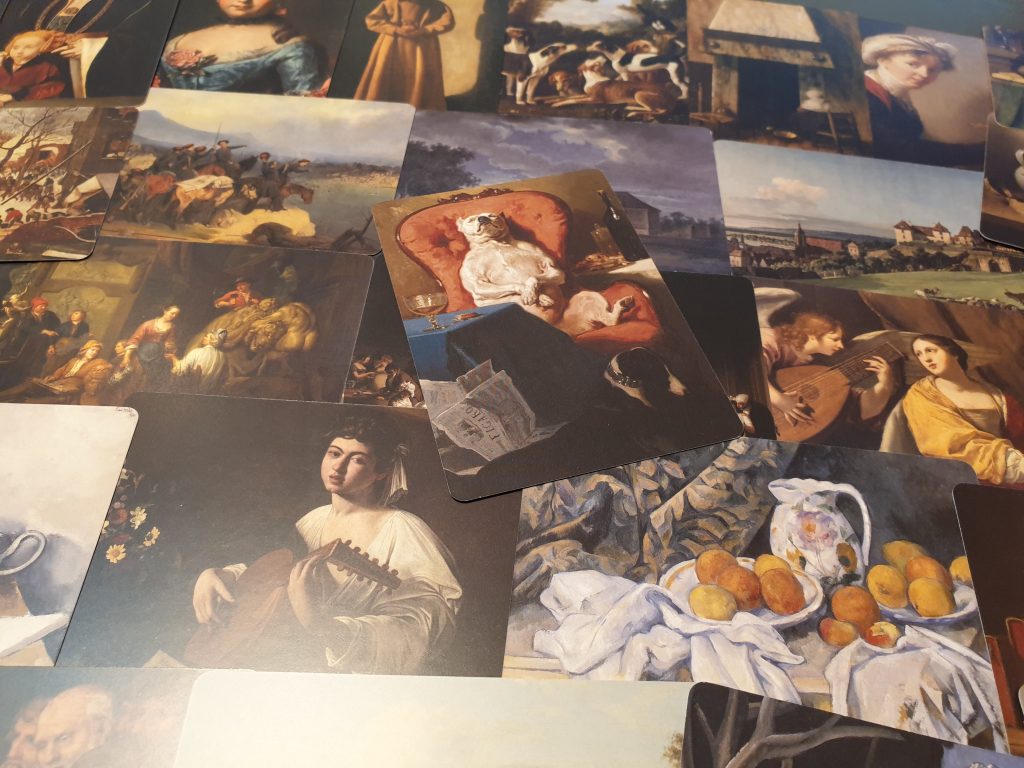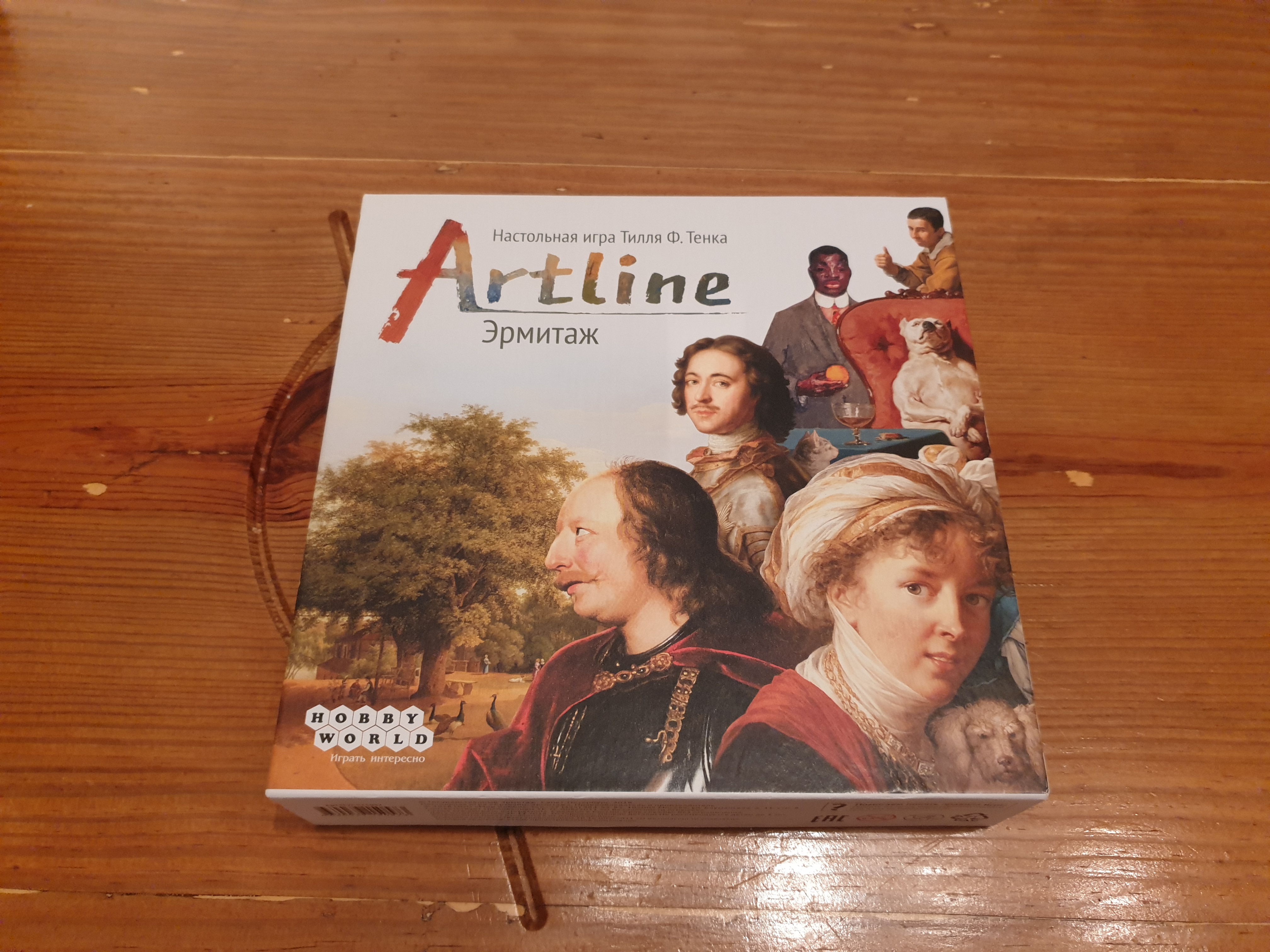Artline is the brand new release from publisher Hobby World, designed by Till F. Teenck. The game features hand management, card placement and link making. Taking around 20 minutes, 2 – 5 art connoisseurs must open galleries and wonderful exhibitions of paintings to win. However, will the likes of Pablo Picasso take the game to the next level? Let’s find out!
Setup is as simple as shuffling the deck of cards, placing a card face up in the middle of the table and dealing 5 cards to each player. Put the rest of the deck within reach and you are ready to go. Explaination or “the teach” shouldn’t take too much longer either – with very few rules to go through.
On a turn a player chooses a painting from their hand to add to the table. It must be placed adjacent (not including diagonals) to another painting already there. If added to a row or column of only 1 card a gallery is opened. Galleries must have a link between paintings. These cannot be the artist or style but can range from including animals through to blue sky. If adding to a gallery – a row or column of 2 or more cards – then the card must maintain the same link. For example, a gallery with two paintings linked by music can only be added to by a card deemed to have a musical connection. If a link is tenuous it can be voted on by the group.

If a player manages to either open or continue 2 galleries simultaneously – a row and a column intersection – this is called an exhibition. This is what players are truly aiming for. If a player adds or opens a gallery they draw a new card. If they manage to form an exhibition they do not draw a new card. To win a player must be the first to get rid of all of their cards. If this hasn’t occurred once a player has placed a card play moves on clockwise.
The speed of setup and teaching is a great feature of Artline that helps it get to the table and everyone playing within a minute. Keeping up the speed are the fast paced turns that see play come back around the table to you fast. At the higher end of the player count this speed is still there but they dynamic of the board in front of you may have changed significantly. This, more than a 2 player game, requires players to respond on the fly to exhibition opportunities. This creates some great tenuous links as players attempt to fit their paintings into multiple galleries to get rid of them.

This is a game, as suggested in the rules, not to be taken too seriously. At times links can be a touch too vague. This is when players will need to put their competitiveness aside to honestly vote. In Artline a majority vote counts, so it is possible to outvote a bad decision. I can see this irritating an ultra-competitive player – allowing someone else a vague link. However, without this at the heart of the game players would simply challenge every non-blindingly obvious link and things would get stale quickly. Sometimes it is when a player is forced to explain how it is an acceptable link that really makes the game fun to play.
Artline is one of those games that manages to pull off a concept with only a deck of cards. It isn’t a small deck and each time a card comes up a different link can be made with it. Naturally there are some that come up from game to game, such as people or animals, but there can be extremely inventive links made. At times when the game is sprawling across the table it would be nice to have markers to indicate what gallery links are. Thankfully this is rarely necessary as they can be deduced from looking at the gallery row or column.
With 2 players the second player is somewhat on the backfoot at the beginning. The starting player can line themselves up to be able to place a card in an exhibition slightly easier. This fades as the game goes on though. In addition this can be remedied via the Exhibit Season starting variant. This sees 3 starting paintings placed diagonally so both players can potentially start by opening up an exhibition. While with bigger numbers I’d start with either setup, 2 players just feels a tad more balanced by including this starting tweak.

Artline doesn’t have artwork from any old artist. Instead it features artwork from some of the greats such as Vincent van Gogh, with his White House at Night painting included. No matter how much you are into art the majority of players have heard of artists such as Leonardo da Vinci or Henri Matisse which come with an air of gravitas. The majority of the artwork included is rather dark in appearance, brightness wise not sinister dark. Coming from actual painters it is on the serious side and this game is crying out for family friendly light hearted artwork. It still can be played with anyone, of any age, but the art used will mostly captivate art lovers.
Bubbly bright artwork could have helped to attract many others towards the game, but it isn’t the angle Artline has taken. Another slight issue with the artwork that is included is the mixture of orientations, both portrait and landscape paintings are included. Not only does this make the cards awkward to both hold and look through it also makes the board a head tilting exercise.
The gameplay is a solid family game, with easy to teach rules. The flexibility of allowing players to come up with links is a great concept, with different groups driving their own metas. There is no denying the quality of the artwork featured. My concern is that it takes what mechanically is a family board game that could have mass appeal, with Dixit like modern and light artwork, and makes it niche. A number of people will pass on the game because of the art used, which is a shame as even with the serious nature of the artwork there is fun to be had.
[Editor’s Note: Artline was provided to us by Hobby World for the review.]

